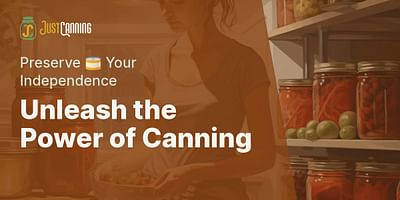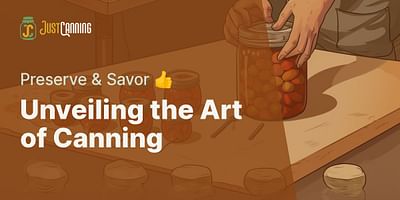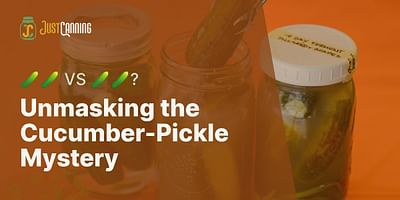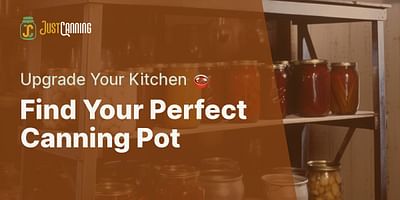Samuel Whitaker is a professional chef who has a passion for canning. He appreciates the art of preserving food and enjoys teaching others how to do it. He has written numerous articles on the subject.
Welcome to the fascinating world of canning, a method of food preservation that has been a staple in American households for centuries. You might be wondering, why use canning for preservation? The answer lies in the unique process that canning employs to keep food fresh and safe for consumption.
Canning jars in America are used to store a variety of foods, from fruits and vegetables to meats and sauces. The food is first placed in the jars, then it's heated to kill microorganisms that cause food to spoil. This process, known as the canning process, creates a vacuum seal that prevents new bacteria from entering and spoiling the food. So, how does canning preserve food? It's all about creating an environment where bacteria cannot survive, effectively preserving the food inside the jar.
What is canning in food preservation, you ask? It's a method that allows us to enjoy seasonal foods all year round, reduce food waste, and ensure food safety. With the use of a canning machine, this process is made even simpler and more efficient, making it a popular choice for food preservation in America.
Unearthing the Roots: How 'Canning' Got Its Name 🌱
The term 'canning' and its connection to food preservation has a fascinating history. The story begins in France with an inventive confectioner named Nicolas Appert. In the early 19th century, Appert discovered that food could be preserved by heating it in sealed glass jars, a revolutionary concept at the time. This process, which we now know as canning, was a game-changer in food preservation. If you're interested in learning more about food preservation, you might find this FAQ on food preservation helpful.
Across the channel in England, a merchant named Peter Durand took Appert's idea and ran with it. He patented the use of tin cans for food preservation, which was more durable and practical than glass jars for transportation. The term 'canning' was born from this innovation. If you're curious about the difference between storing food in jars versus cans, check out this FAQ on the difference between jar and can storage.
So, why do we use the term 'canning' in America, even when we're using glass jars? The answer lies in the process itself. Whether you're using a canning machine to seal tin cans or preserving homemade pickles in glass jars, the method of preservation is the same. It's all about heating food to kill bacteria and sealing it away from the air. This is why 'canning' has become a universal term for this preservation method, regardless of the container used. If you're interested in the specifics of canning in jars, you might find this guide to canning jars useful.
From Battlefield to Kitchen: The American Journey of Canning 🇺🇸
As we delve into the evolution of canning in America, it's important to understand how deeply rooted this method of food preservation is in the country's history. The practice of canning was brought to America during the Civil War, when it was used as a means of preserving food for soldiers on the battlefield. The process involved sealing food in cans and then heating it to kill bacteria, yeast, and molds that could cause the food to spoil. This method was efficient and practical, allowing for long-term storage and easy transportation. To learn more about safe canning practices and common mistakes to avoid, check out our article on 'Safety First: Common Canning Mistakes That Can Kill You and How to Avoid Them'.
After the war, this preservation technique found its way into American households. The advent of the canning machine made the process more accessible, and canning jars in America became a common sight in kitchens across the nation. Families began canning their homegrown produce to extend its shelf life and enjoy the fruits of their labor year-round. This was especially important in rural areas where fresh produce was seasonal. If you're interested in canning your own produce, our guide on canning plums is a great place to start.
So, why use canning for preservation? It's simple - canning preserves food by creating an environment that's inhospitable to the microorganisms that cause food to spoil. The heat used in the canning process kills these microorganisms, and the sealed jar prevents new ones from entering. This is how canned food is preserved, making canning an effective and reliable method of food preservation. For more details on the canning process and its benefits, you might find our guide to canning mangoes helpful.
Canning or Jarring? Clearing Up the Confusion 🔄
Now, you might be wondering, "Why do we use the term 'canning' when we're actually preserving food in jars?" Well, the answer lies in the history of this preservation method. In America, the terms 'canning' and 'jarring' are often used interchangeably, but they refer to the same process. The word 'canning' comes from the method of food preservation in which food contents are processed and sealed in an airtight container. This process, invented by Nicolas Appert and later patented by Peter Durand, was originally done in tin cans. If you're interested in the differences between canning and other preservation methods, you can check out this FAQ on the difference between canning and pickling.
As the technique made its way to America, it evolved. Instead of tin cans, glass jars became the preferred container, thanks to their reusability and visibility of contents. However, the term 'canning' stuck, and so we continue to use it today, even though we're using jars. So, whether you say 'canning' or 'jarring', you're talking about the same method of preserving food by sealing it in airtight containers and heating it to kill or weaken any spoilage-causing microorganisms. This process extends the food's shelf life, making it safe to eat long after it's been prepared. To learn more about the importance of food preservation, you can read this FAQ on why food preservation is important for pickling.
Why Canning Matters Now More Than Ever 🕰️
In today's world, the relevance and benefits of canning in America are more pronounced than ever. Why use canning for preservation, you may ask? The answer lies in its threefold benefits: food safety, preservation, and sustainability. To understand more about preservation techniques, you can explore this article on essential camping food preservation techniques.
Through the process of canning, harmful bacteria, yeasts, and molds that could cause foodborne illnesses are eliminated, ensuring food safety. The high heat used in canning also extends the shelf life of food, making preservation a key advantage.
Moreover, canning is a sustainable practice. By preserving seasonal produce, we can enjoy the bounty of each season all year round, reducing dependence on imported goods and thereby promoting sustainability.
So, whether you're using a canning machine or opting for the traditional stovetop method, canning is an excellent way to ensure the safety, longevity, and sustainability of your food. If you're interested in modern methods, you might want to check out this guide on Instant Pot canning. Remember, canning isn't just a process—it's a lifestyle choice that brings us closer to our food and the earth it comes from.
Ready to dive into the world of canning? Explore our collection of canning recipes and guides, including this guide on canning turkey, and start your journey towards self-sufficiency and sustainability today.















